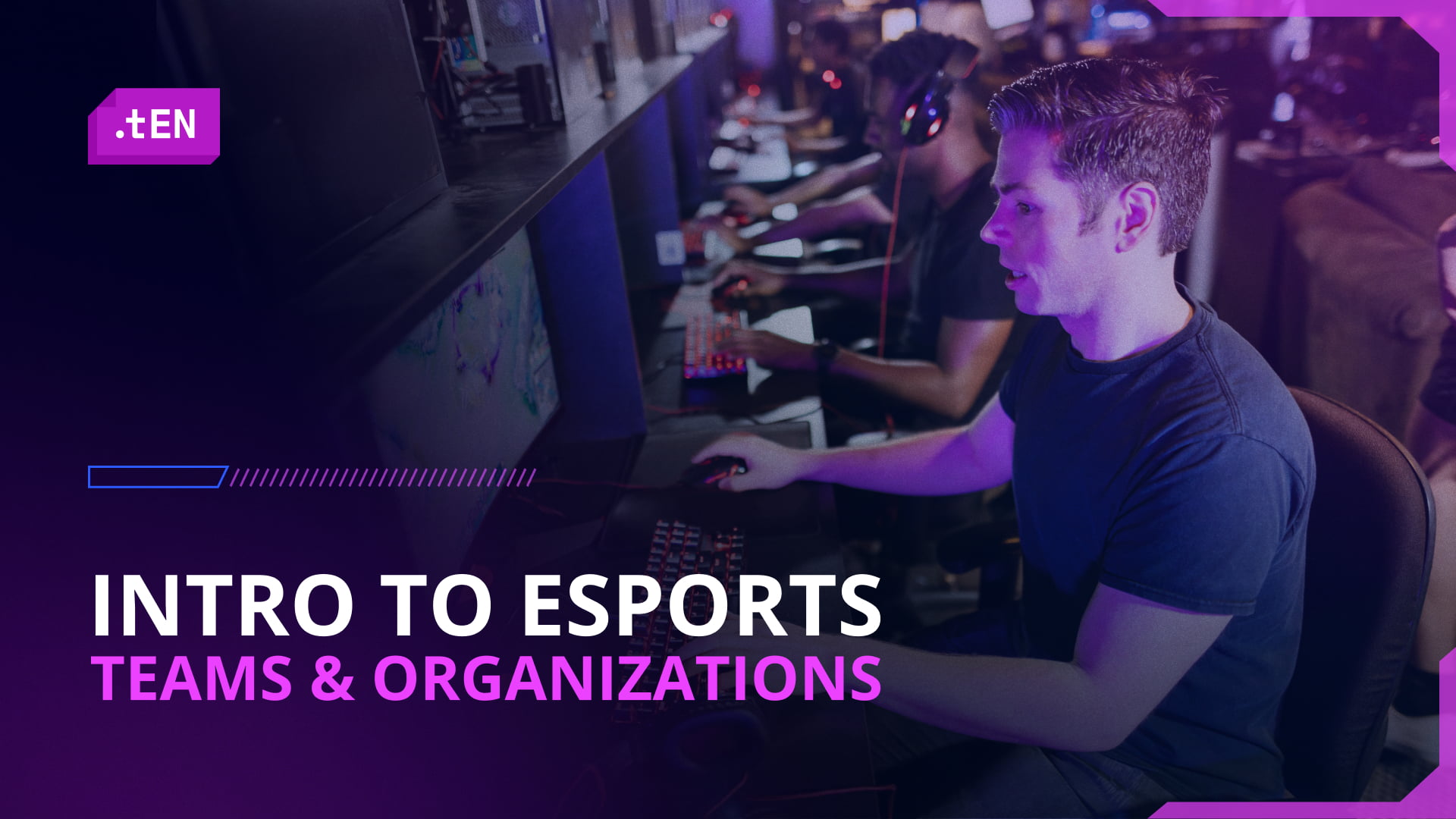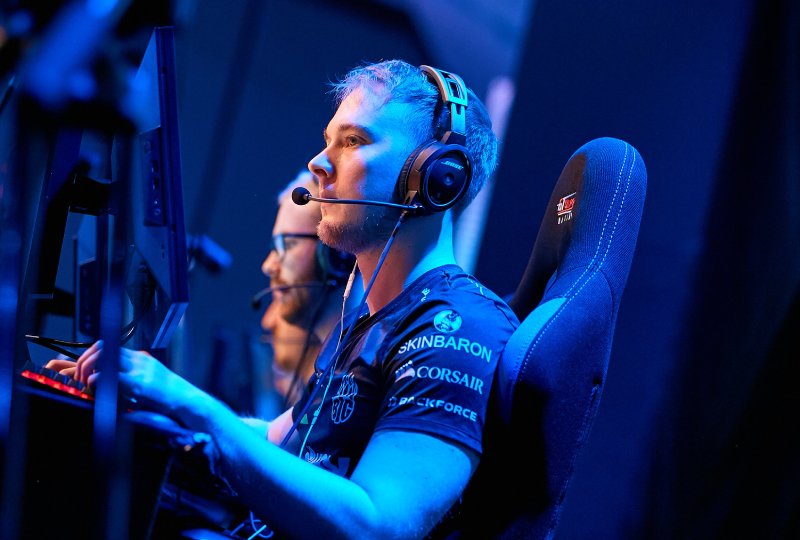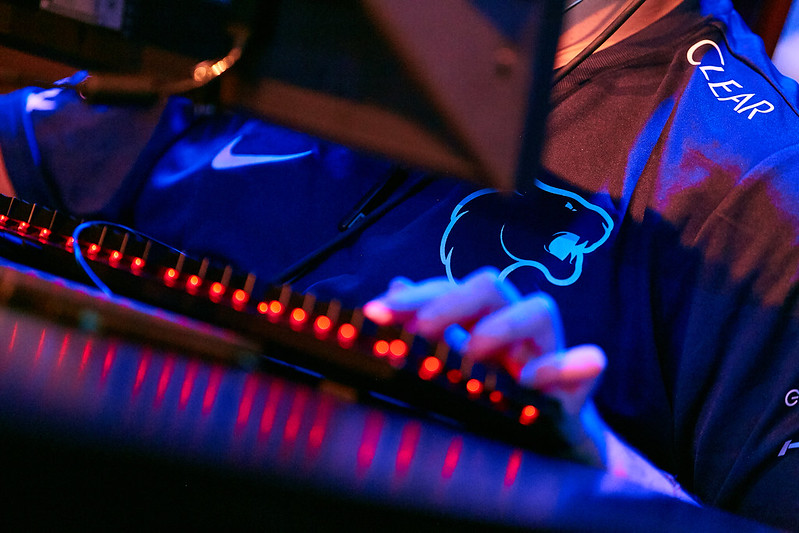TEN blogs
Esports Intros: Teams and Organizations


When it comes to esports, teams and their organizations are essential for the whole existence of the industry. After all, they are in possession of the most valuable assets for all esports – the players.
Teams and organizations are fundamentally the same, with teams generally only having one roster on a single game and organizations having multiple rosters on multiple games under the same name. Teams can become organizations quickly and vice versa, so for the purposes of this article we’ll treat them as the same.

At their core, esports organizations retain the same purpose as the clubs in any team sport. These companies sign individual players or groups of players to compete in professional video gaming competitions under the team’s brand in order to capitalize on it in various ways. Undoubtedly, this is the most widespread type of business in the industry.
The basics of teams and organizations
Aside from the players themselves, an organization is composed of a number of other individuals who are there in support of the main team. The essentials to pick up for a team are a manager and a coach, however successful high-tier esports teams often have a whole staff, including an analyst, an assistant coach, a physiologist, and a psychologist, who care for the players’ health around the clock.
Keeping the players on the team in good shape is undoubtedly vital, but the organization must also constantly update the squad and find new talent. Scouting not only allows for a cheap renewal of the core roster in the future but also opens up the possibility of selling the contracts of young talent for a huge profit.
Case in point: In 2019, NAVI launched project Junior, an extremely successful CS:GO academy team. Several graduates of it became global stars of CS:GO, most noticeably Valeriy ‘b1t’ Vakhovskiy, who joined the main roster, and Illya ‘m0NESY’ Osipov, who’s been acquired by G2 for over $600,000 reportedly.
In addition to the support staff, an esports team’s management commonly consists of managers, SMM, marketing, a content department, and sales specialists working towards monetizing the team’s success and maintaining a close connection with the fanbase.
The financial challenge of esports organizations
Believe it or not, one of the biggest challenges for any esports organization is to keep it profitable. Despite having a wide range of tools to turn a profit, most esports teams struggle to stay afloat, barely managing to balance the books by the end of a year.
Of course, tier-1 organizations have a much easier time because of their prestige and status, but the smaller an organization is, the more of a revolving door their sponsorships are. However, this kind of trend occurs not only because of the natural capabilities of the team but also due to the fact that the management teams of organizations are significantly limited in tools and are not fully aware of the full range of their own opportunities.
Sponsorships and partnerships
Sponsorships and partnerships remain the most common source of revenue for esports organizations due to how simple the arrangement usually is. As with many sports, betting companies are among esports’ most popular sponsors, while manufacturers of parts for computers and peripherals usually come in second.

It is worth adding that recently crypto businesses have predominantly become the title partner of teams. They can afford to compete with the bookmakers in terms of capital, but at the same time, do not carry moral concerns in the same way. Teams from the USA have been most affected by this, where the law forbade the advertising of bookmakers, which in turn hurt teams’ sponsorship packages.
Case in point: In the summer of 2021, the FTX crypto exchange invested $210 million in TSM. The agreement is designed to run for a minimum of 10 years, under which TSM acquired 1 million FTT tokens owned by FTX, and will distribute them among its employees and players. At the time, it was the largest partnership deal in esports history.
Player transfers
When it comes to any kind of sports, electronic or traditional, transfers are steadily holding their position in the list of revenue streams. Despite the public attention to roster moves between organizations, they hardly present themselves as a reliable source of revenue. Not even mentioning the very real issue of transfer instability in modern esports. Teams would buy out a player’s contract only on rare occasions, mostly preferring to wait until the player’s contract expired.

The usual 1-2 season length contracts only aggravate the problem; organizations do not tend to offer the player a long-term contract since many factors influence a player’s performance, including meta shifts in the gameplay itself.
Prize money
Prize money, while on paper looks very promising, is barely a footnote in the revenue book. Keep in mind that the overwhelming majority of players’ contracts imply a 10-15% cut. Therefore, regular deductions from prize money won will barely cover the cost of monthly salaries to players. However, there is an exception to be made in the case of the Dota 2 World Championship – The International. This event traditionally boasts an unmatched $40+ million prize pool, out of which even a 10% cut makes it worth the investment.
Franchise leagues
One of the most reliable sources of revenue for esports clubs is franchise leagues. These are mutually beneficial agreements between a number of teams and a tournament operator about participation in competitions. Places in such leagues cost up to millions of dollars, but the revenue more than balances out the expense due to the distribution of total earnings among all the participants. This business framework is well regarded due to its predictability, making finding sponsors for the event much easier.
In-game purchases
The main difference between esports and traditional sports is the game client. It allows for a simple and unique connection between the organization and its fanbase, opening new opportunities for making a profit.

Since esports is a hugely successful marketing tool from a game developer’s point of view, they tend to support organizations by releasing various themed in-game cosmetics, stickers, and bundles, with a percentage of the sales going directly to the teams. The amount of such payments can reach up to several hundred thousand dollars.
Crypto and blockchain
One thing is getting sponsorship with crypto businesses, and completely different is launching their own products to capitalize on the fanbase through modern technologies, like blockchain, NFTs, and the last word in these, metaverse. In fact, one can make a strong parallel between NFTs and in-game items – ‘skins’.
Merchandise
Of course, as in traditional sports, esports organizations can benefit from the sale of merchandise. For this to be a significant revenue stream, they would need to either open their own online store, not something that every organization has the resources to run, or to attend LAN tournaments with spectators and stores to sell goods. For smaller organizations, merch makes up a relatively small chunk of their overall revenue, although the biggest names would have enough of a following to make it a worthwhile option.
Going public
Eventually, an esports organization can go public. For this, the organization issues a limited amount of tokens anybody can buy. It is important to understand that the money raised from the sale of shares cannot be taken as revenue.

Photo by Oren Elbaz on Unsplash
These are investments that an organization funnels directly into its budget to scale the project and set in motion new initiatives that will bring even more profit to contributors in the future. In addition, in some cases contributors may receive the authority to influence some of the company’s decisions.
Case in point: In 2019, Astralis Group began trading on the Nasdaq First North Growth Market Denmark, with shares starting at a 9.50 DKK price. Astralis Group sold 16,759,777 shares in its IPO. It had already accomplished this in pre-orders before trading opened. Estimated collected value ~$22.2 million USD.
Content and streaming
Streaming and content creation, when combined with smart sponsorship decisions, can lead an esports organization to a profitable future. Organizations such as FaZe Clan, NRG, and 100 Thieves were founded around streaming, and it remains a source of revenue for them to this day.
The biggest advantage of this path is that it has no limits in partnerships and is only bound by the type of content created (video gaming, life-streaming, etc.) and its audience. Traditionally, streaming is less popular in regions such as Eastern Europe, where revenue from advertisements is generally lower.
How far do an esports organizations’ branches reach?
No part of esports is an island on its own, and this is especially true for esports organizations. They work with companies and groups across every aspect of the industry in various ways that the average fan would never see out front.
Agencies
Organizations often rely on various agencies during their work, compensating for any missing management departments and saving operational costs. There are also marketing, PR, and content creation agencies that provide whatever services an organization may need.
Additionally, when signing contracts with new players, organizations usually have to deal with agencies representing professional players, which provide athletes with legal support and personal management. Organizations that do not have their own scouting department often reach out to agencies for help completing their roster.
Bootcamp facilities
The same goes for bootcamp facilities. It is a location designed to create perfect conditions for the training process of esports athletes and is most often used to prepare a team ahead of a tournament. Since most teams are initially formed online, they may not have many opportunities for in-person communication and building team chemistry.
Organizations host bootcamps to develop a better understanding within a team and provide a bonding experience. Players call it “team chemistry.” Smaller organizations usually don’t have their own bootcamp, so they prefer to rent one temporarily. Depending on teams’ financial capabilities, bootcamps can vary from fully-equipped summer houses to full-fledged training complexes.
Tournament organizers
As you might’ve already guessed, esports organizations work closely with tournament organizers. This type of partnership greatly benefits both parties since teams get an opportunity to compete, bringing in their status and fanbase to the tournament. This works as an upward spiral: better teams give the event a higher prestige; the higher the reputation, the more prize pool the tournament has, resulting in even better teams joining it next time.

Teams get more prizes and fans, while tournaments get more viewers and higher tiers. Along the way, all of them earn more valuable sponsorship packages, and a strong media performance for the event can even lead to bonuses for the organizers.
Associations and Federations
Individuals and in some cases whole organizations, can unite in associations, speaking as a united front in matters of conditions for participants, tournament rules and regulations, transfer policy, the competitive calendar, and many others. These are most commonly national groups, such as the USEA for the US or AESA for Australia, and can even include things like the CSPPA, an international players’ association.
On the other side, federations work with esports organizations and the wider world to raise the standing of esports at national, regional, and international levels. Building legitimacy and recognition helps all aspects of the industry, with organizations benefiting from greater sponsorship opportunities and greater support from local authorities.
Media
Needless to say, during its work, an esports organization will also keep active relationships with media, both in and outside the industry. Maintaining this bridge is vital because outlets directly influence the public perception of an organization. Although consistent good results may diminish the impact of media, once the team starts losing, a lousy press can give a significant headache creating a depressing environment even for the players.

What is often not publicized is that maintaining a good relationship with the media can benefit an esports organization. For example, well-controlled rumors during the transfer period can affect the value of the player’s final contract during the negotiations. Strong media relations can also lead to greater sponsorship opportunities thanks to a wider audience reach.
Afterword
Surprisingly, despite having a place in the very middle of the market and numerous ways for monetization, having a margin above zero is the real challenge for modern esports organizations.
Some factors are very difficult to influence, be it the laws of the state or the peculiarities of the game title, but the main obstacle in the way of esports organizations is ignorance. Just like in Dota 2 it is important to place wards to control the map; in the esports business, your income depends primarily on how well you know this market.
Naturally, for industry veterans with more than 10 years of experience, this is most likely not a problem. But in the ever-growing esports space, there are fewer such representatives and more and more new and ambitious projects founded by former players, enthusiasts, and external investors. TEN allows you to see a map of the entire market easily; after creating a profile, a potential partner will be able to find you on their own.
=====
If you represent a business in the esports or video gaming industries, you can make yourself available for business inquiries by registering and owning a company profile.
Subscribe to our social networks to stay up to date with our latest events:
Have questions or feedback regarding this article? Get in touch with us on the platform!